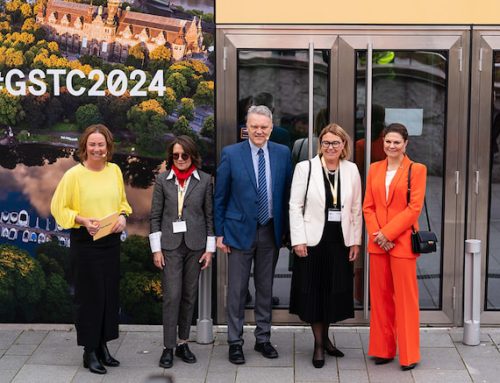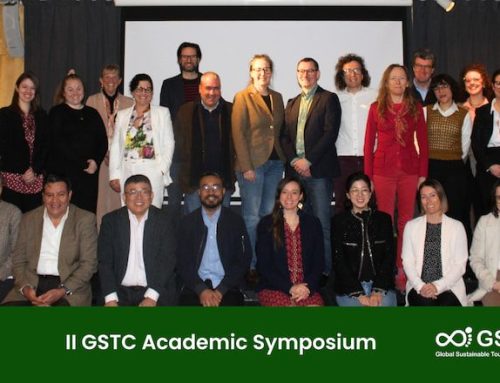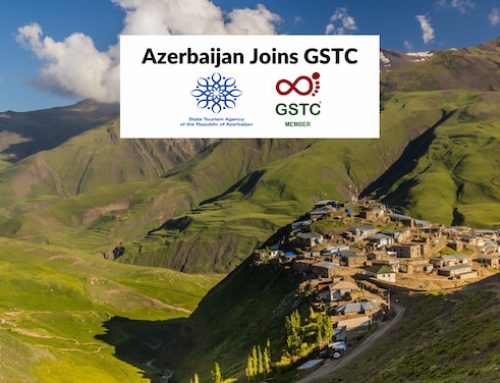The performance indicators presented here are designed to provide guidance in measuring compliance with the Global Sustainable Tourism Criteria for Hotels and Tour Operators (GSTC-HTO). They are not intended to be the definitive set or all-inclusive, but to provide a solid sample set for users of the GSTC-D in developing their own indicator sets.
This draft set of indicators will be updated periodically, as new information is developed. If you would like to suggest new indicators or other improvements, please send your suggestions to accreditation@gstcouncil.org.
CRITERIA | INDICATORS |
|---|---|
SECTION A: Demonstrate sustainable destination management | |
A1 The organization has implemented a long-term sustainability management system that is suitable to its reality and scope, and which addresses environmental, social, cultural, economic, quality, health and safety issues. | IN-A1.a. There is a sustainability management system in place which is appropriate to the organizations scale and size. IN-A1.b. The system addresses environmental, social, cultural, economic, quality, health and safety issues. GUIDANCE: Small organizations with small staff may have a simple system, provided it is implemented (emphasis is on performance). Larger organizations must have documented systems, formal reporting, records and training (performance is vital with sustainable management embedded within organizations management). |
A2 The organization is in compliance with all applicable local to international legislation and regulations (including, among others, health, safety, labor and environmental aspects). | IN-A2.a. Compliance with all relevant legislation and regulations (including health, safety, labor and environmental). IN-A2.b. There is an up-to-date list of legal requirements. GUIDANCE: An overall register of legal requirements and documentation showing compliance with fees/conditions is desirable. Compliance with permit/license and planning conditions should be documented. |
A3 All personnel receive periodic guidance and training regarding their roles and responsibilities with respect to environmental, social, cultural, economic, quality, health and safety issues. | IN-A3.a. All staff has awareness of their roles and responsibilities with respect to environmental, social, cultural, economic, quality, health and safety issues. IN-A3.b. Staff have locally required licences/certification relevant to their duties (e.g. sewage treatment plant operator). GUIDANCE: On-the-job and formal training is provided as required to ensure awareness. Larger organizations must have formal training with materials and duty statements for critical tasks/responsibilities. Training and manuals etc. are in appropriate languages. Staff with required certifications/licences should be supported to maintain currency/understand best practice. |
A4 Customer satisfaction, including sustainability aspects, is measured and corrective action taken. | IN-A4.a. A complaint system is in place which records customer complaints and corrective actions. GUIDANCE: Best practice is to have proactive customer satisfaction surveys/interviews with analysis and corrective action/improvement programs, |
A5 Promotional materials are accurate and complete with regard to the organization and its products and services, including sustainability claims. They do not promise more than is being delivered. | IN-A5.a. Marketing materials set realistic expectations and do not make false or misleading claims. GUIDANCE: Images are of the actual experiences and places visited by customers. Marketing about wildlife or cultural events does not promise sightings which are not guaranteed. Claims about sustainability should be based on past performances not sustainability aspirations. |
A6 Planning, design, construction, renovation, operation and demolition of buildings and infrastructure… | IN-A6.a. Current inventory and classification of tourism assets and attractions including natural and cultural sites |
A.6.1 …comply with zoning requirements and with laws related to protected areas and heritage consideration. | IN-A6.1.a. Land use and activities are in compliance with local zoning and protected or heritage area laws and regulations, including any licenses and permits and/or management plans. GUIDANCE: Consider all relevant social, conservation, urban, recreational, amenity and tourism planning instruments. Statutory instruments must be complied with and non-statutory instruments should be complied with except in appropriate circumstances. Instruments made after the organization started should be complied with as far as practical. |
A.6.2 …respect the natural and cultural heritage surroundings in planning, siting, design and impact assessment. | IN-A6.2.a. Siting and design has considered visual amenity, materials, landscape, the assimilative capacity of the ecosystem to change and takes into account local cultural heritage conservation and presentation aims. IN-A6.2.b. Archaeological, cultural heritage, and sacred sites have not been disturbed (inventory of sites and steps taken to protect them) IN-A6.2.c. Endangered (OR PROTECTED??) wildlife has not been displaced or reproductive habitat destroyed. IN-A6.2.d. Buildings do not destroy scenic amenity. IN-A6.2.e. Water courses/catchments/wetlands have not been altered and runoff from buildings, parking lots, and grounds is channeled and filtered. GUIDANCE: Criteria mandatory for new construction, redevelopment and new activities. |
A.6.3 …use locally appropriate sustainable practices and materials. | IN-A6.3.a. Does the organization incorporate local practices, materials and crafts into structures, native plants into landscaping, and local customs into programs and operations. GUIDANCE: Balance the benefit of local sourcing of materials with sustainability of the materials, including life cycle considerations. |
A.6.4 …provide access for persons with special needs, where appropriate. | IN-A6.4.a. Facilities and services (including materials) are accessible to persons with special needs. Level of accessibility is clearly communicated to the customer. GUIDANCE: Match the special needs access with the normal mobility expected of the customer for example city hotel would be expected to fully provide, remote mountain lodge with hiking trails as the main activity less requirements and adventure river rafting would cater only for fully able-bodied customers. |
A7 Land and water rights, and property acquisition are legal, comply with local communal and indigenous rights, including their free, prior and informed consent, and do not require involuntary resettlement. | IN-A7.a. Land use/tenure and rights to activities have formal legal recognition or there is documentation of agreement by local communities and indigenous owners. IN-A7.b. The land use and activity has not involved any involuntary resettlement or land acquisition. GUIDANCE: Criteria mandatory for new construction, redevelopments and new activities. |
A8 Information about and interpretation of the natural surroundings, local culture, and cultural heritage is provided to customers, as well as explaining appropriate behavior while visiting natural areas, living cultures, and cultural heritage sites. | IN-A8.a. Customers are aware of appropriate behaviors and have a general understanding of the local natural and cultural environment. The company has an interpretation program with displays, guides, collateral etc. GUIDANCE: Best practice is to engage staff of the local culture and/or experts in natural/cultural heritage of the local area to present. |
SECTION B: Maximize social and economic benefits to the local community and minimize negative impacts | |
B1 The organization actively supports initiatives for local infrastructure and social community development including, among others, education, training, health and sanitation. | IN-B1.a. There is some form of contribution to local* community for public benefit through commercial, in-kind, or pro bono engagement. GUIDANCE: Best practice is a program developed in collaboration with community. The level of contribution should be commensurate with the organizations tourism business turnover and the economic status of the local community. |
B2 Local residents are given equal opportunity for employment including in management positions. All employees are equally offered regular training, experience and opportunities for advancement. | IN-B2.a. Local residents are employed, including in management positions. Training and career opportunities are offered to local residents. GUIDANCE: Best practice is employees engaged from an existing local community. The level of local resident employment should be commensurate with the seasonality, location and economic status of the local community. |
B3 Local services and goods are purchased and offered by the organization, following fair-trade principles. | IN-B3.a. Purchases are mostly from local providers and/or fair trade. Services offered involve local businesses to the greatest extent possible. GUIDANCE: Best practice is a purchasing policy which gives priority to local and fair trade suppliers that meet quality and environmentally-friendly criteria. Services and contractors etc. should be locally sourced as far as practical. For tour operators the critical aspect is to support locally owned restaurants, services, and shops utilized on tours. |
B4 The organization offers the means for local small entrepreneurs to develop and sell sustainable products that are based on the area’s nature, history and culture (including food and beverages, crafts, performance arts, agricultural products, etc.). | IN-B4.a. The organization provides their customers with access to local enterprises, including handcrafts, food/beverage, cultural performances, or other goods and services, to sell directly to guests, as far as practical. GUIDANCE: The level of local entrepreneur’s access should be commensurate with the organizations tourism business turnover relative to the economic status of the local community (i.e. larger tourism business in impoverished community the access should be high, city hotel in a developed economy the access may be low). |
B5 A documented code of conduct for activities in indigenous and local communities has been developed and implemented with the collaboration and consent of the affected community. | IN-B5.a. Documented code of conduct with includes the organization’s policy documents, marketing, staff induction and training material, and interpretive brochures. In developing the code, the organization has consulted and sought consent of the local community. GUIDANCE: Small organizations with few staff may have a simple approach provided it is implemented larger organizations must have documented code of conduct. |
B6 The organization has implemented a policy against commercial, sexual or any other form of exploitation and harassment, particularly of children, adolescents, women and minorities. | IN-B6.a. Documented policy of made known to all staff and management. In developing the code, the organization has consulted and sought consent of the local community. GUIDANCE: Small organizations with few staff may have a simple policy provided it is implemented; larger organizations must have documented policy and associated staff awareness and reporting systems. |
B7 The organization offers equal employment opportunities to women, local minorities and others, including in management positions, while restraining child labor. | IN-B7.a. Percentage of women and local minority employees on staff is reflective of local demographics (both in management and non-management categories). Internal promotion of women and local minorities occurs. There is no child labor (as defined by the ILO). GUIDANCE: In local economies with little tourism employment and/or for businesses with high degrees of training and experience requirements of staff the employment of local minorities may be reduced, however in this case some employment and training, commensurate with the size of the organization is expected. |
B8 The international or national legal protection of employees is respected, and employees are paid at least a living wage. | IN-B8.a. Salaries and benefits meet or exceed local, national and international regulations, (whichever are higher). IN-B8.b. Payment is made into national social security system (if available) for qualified employees. IN-B8.c. Overtime is paid for hours worked beyond the established work week hours and working hours must not exceed the legal maximums or those established by the International Labor Organization. IN-B8.d. All employees have the right to annual paid vacation. IN-B8.e. Health insurance or the equivalent is provided to all employees. GUIDANCE: Salaries and benefits for local employees should compensate to any extraordinary travel costs (e.g. out of hours travel when public transport is not available). |
B9 The activities of the organization do not jeopardize the provision of basic services, such as food, water, energy, healthcare or sanitation, to neighboring communities. | IN-B9.a. No increase in the number of incidents/reports of outages, reduced service or quality of product for the local community as compared to organization. IN-B9.b. Changes in energy/water/waste disposal costs as a % of community income. IN-B9.c. No reduction in availability of water, waste, and energy to the local community as the result of the organization’s activities. GUIDANCE: The assessment of this criterion should as far as practical address the cumulative effects of all tourism on the local community as well as the individual organization. |




